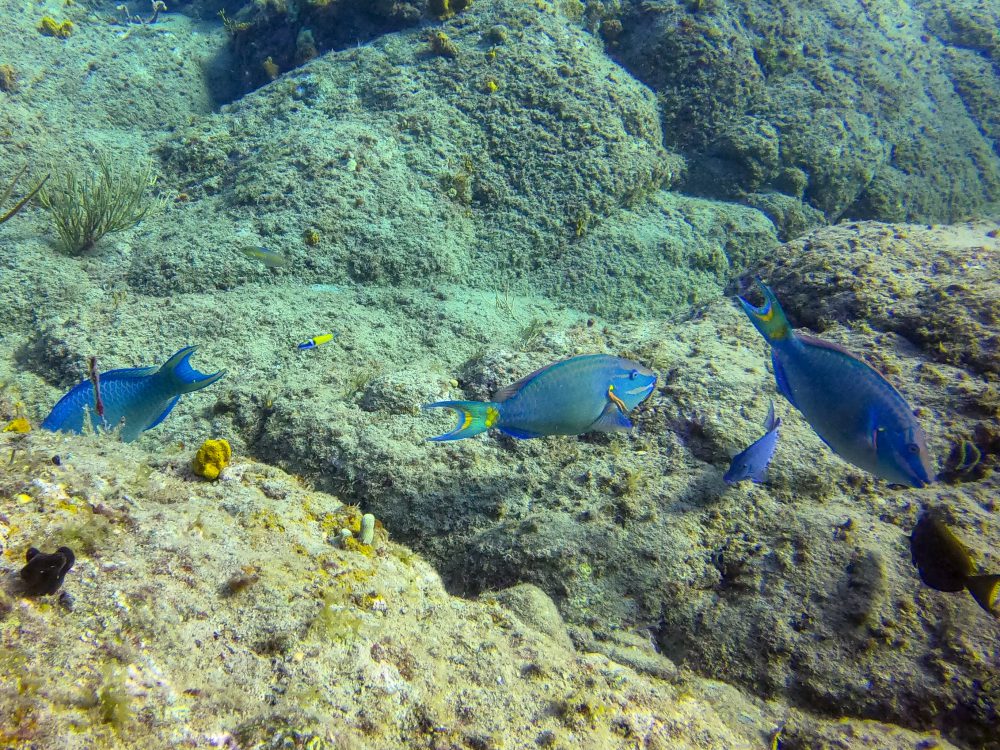Parrotfish, the Maintenance Crew of the Caribbean Reefs

Natural History of the Parrotfish, Scarus spp.
There are around 60 species of parrotfish, and they generally come in beautiful bright colors ranging from reds to greens, blues and yellows. They were given the name “parrot-fish” due to their fused-teeth that give them a beak-like appearance. They range in size, and can get up to 4 feet long, with males typically being the larger of the sexes.
Cool fact: parrotfish are sequential hermaphrodites – changing from female to male as they age!
Coral Reef Maintenance Crew
Parrotfish are considered to be one of the most important fish for the coral reefs of the Caribbean because they spend up to 90% of their days eating algae and dead corals, essentially “cleaning the reefs” to allow for a healthy ecosystem. Algae would otherwise smother the living coral, and prevent new corals from being able to form.
As they eat the dead corals, they poop out sand, up to 200 lbs a year, making those white sand beaches you love so much. Check out this video for a cute animation about how sand is made, you will forever think of beaches differently!
Next time you go diving – listen closely and you can hear their strong teeth chomping away at the corals.

Parrotfish in Trouble = Coral Reefs in Trouble
These beautiful and ecologically important fish are facing dangerous population declines due to overfishing. When their numbers decline, algae levels increase, resulting in a less productive ecosystem.
It has been determined that overfishing is the primary factor determining the health of the corals in the Caribbean, and not climate change or pollution.
Fishers often target the largest fish – in this case, the males. This can be detrimental to parrotfish reproduction as the sex ratio is altered (less males to mate with), therefore forcing the females to change to males before they are of proper size.
What can you do to help?
“The #1 thing we can do to ensure the health of coral reefs is to protect parrotfish.”
– Dr. Ayana Elizabeth Johnson, marine biologist
A law was recently passed in Barbuda making it illegal to catch, buy, sell, or posses parrotfish. Additionally, much of their coastal area is protected in marine reserves.
Boycott restaurants that are serving parrotfish. If you enjoy eating seafood, opt for more sustainable options. Fish such as the lion-fish (although beautiful) are an invasive and destructive species in the Caribbean.

By: Sasha R – January 5, 2020
